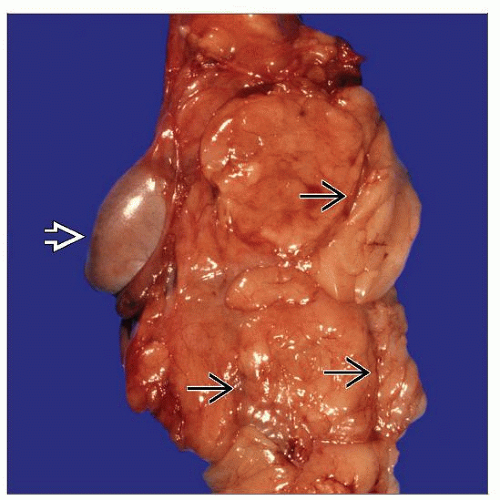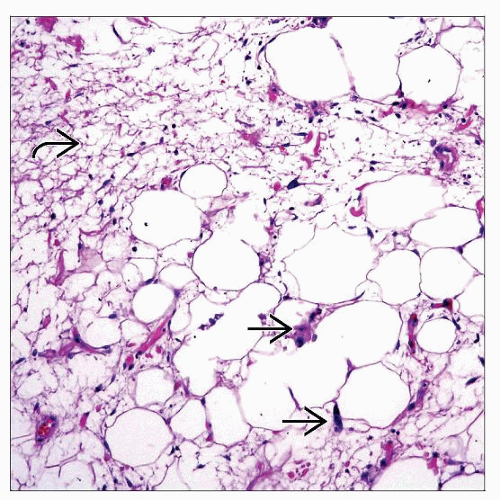Liposarcoma
Steven S. Shen, MD, PhD
Jae Y. Ro, MD, PhD
Key Facts
Terminology
Malignant neoplasm showing adipocytic differentiation
Clinical Issues
Rare, but is most common sarcoma in paratesticular tissue in adults
Range: 41-87 years old (average: 63 years old)
Large scrotal mass
Macroscopic Features
Soft, homogeneous, multilobular, yellow to ivory mass
May mistaken for lipoma except for its large size and fibrous bands
Fleshy white tan to tan-gray firm areas with hemorrhage or necrosis indicating dedifferentiation
Microscopic Pathology
Mature adipose tissue of variable cellularity and fibrous tissue
Marked variation in adipocyte size and shape
Atypical cells with large, hyperchromatic nuclei
Lipoblasts with multivacuolated or univacuolated cytoplasm should be present but should be difficult to identify
Ancillary Tests
Positive for S100, CDK4, mdm2
Top Differential Diagnoses
Lipoma
Adenomatoid tumor
Sclerosing lipogranuloma
TERMINOLOGY
Synonyms
Atypical lipomatous tumor (ALT), well-differentiated liposarcoma (WDL)
Definitions
Malignant neoplasm showing adipocytic differentiation
CLINICAL ISSUES
Epidemiology
Incidence
Rare, but is most common sarcoma in paratesticular tissue in adults
Age
Range: 41-87 years old (average: 63 years old)
Presentation
Large scrotal mass
Usually involves spermatic cord, testicular tunica, or epididymis
Treatment
Surgical approaches
Surgical resection is usually curative
Prognosis
Favorable with complete excision
Unfavorable with dedifferentiation or metastasis
Local recurrence may occur
IMAGE FINDINGS
General Features
Large hyperechoic mass by ultrasonography
CT and MR are more specific as they may detect fat component
MACROSCOPIC FEATURES
Stay updated, free articles. Join our Telegram channel

Full access? Get Clinical Tree








